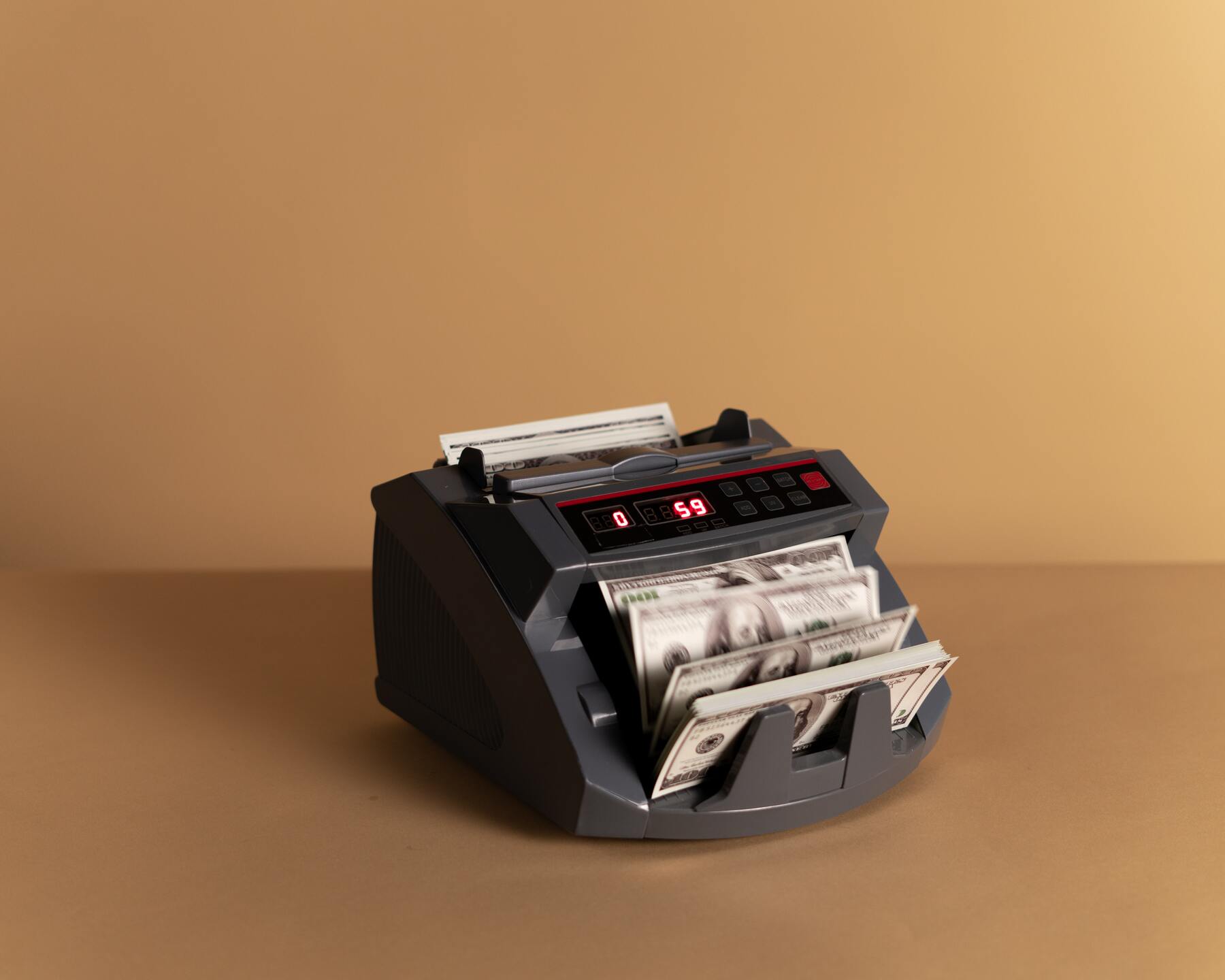
How To Price Your Artwork (Beginners Do’s and Dont’s)
Heads up: This post may contain affiliate links, so if you buy something through one of those links, you won’t pay a penny more but we’ll get a small commission, which helps keep the lights on. Thanks!
Whether you’re selling your art for the first time or the 100th time, it can be a challenge to find the right price for your artwork. You might’ve looked it up and found that Google has generated over a million results, and all the Youtubers have left you confused. If you set the price too high, your work could be collecting dust in the corner. But, set the price too low and you could be leaving money on the table and even worse devaluing your worth.
So, where do you begin to find that middle ground where you can start to sell your art properly? We’ve asked our artists for some helpful tips to help you get started. In this post, we’ll share some do’s and don’ts to find your artwork a loving home and some well deserved money in your pockets.
Do’s & Don’ts For Pricing Your Art When You’re New To This
The truth is, there really isn’t a cut and dry way to price your art in my opinion. There are a lot of factors that come into play, that can affect the price at which you sell your art. Every artist has asked themselves “well, how much should I sell it for?” The truth is there are a few things to consider when coming up with a price.
Do: Have a price in mind
Plan ahead a little bit and have a set price in mind incase someone approaches you and asks to buy your art. Don’t be caught making guess work of your own work. If you have a figure in your mind and they decide to turn away, don’t lower your price or ‘make a deal’ on the spot. Use their reaction as information towards coming up with a more suitable price in the future.
Don’t: Forget to include all your costs
When coming up with a fair price for your artwork, be sure to consider all the costs associated with making that item. Keep track of your expenses while you create your pieces so that you don’t end up losing money. Take into consideration the costs of materials, printing, framing, packaging, shipping, storage fees or studio rent etc. And don’t forget to incorporate sales commissions if you’re selling through a gallery or agent.
Do: Start with a higher price
If you price your artwork too low, it could decrease the value of your work. If you price your artwork higher it can show confidence and ambition. Obviously don’t be overzealous with this figure but do keep the professional hourly wage in mind rather than the minimum hourly wage when coming up with a price. You should be get paid for the skills you’ve developed.
Don’t: Under-charge for your work
It may be tempting to start out by giving your work away for free or selling art at incredibly low prices for the sake of making sales. It’s okay to give a gift to a friend or two if want, but don’t make a habit of it if you intend to make a career out of your art. By regularly giving away your art, you’re not only leaving money on the table, but you are decreasing the value of your work. If you price your art too low it can often indicate low quality artwork. Don’t devalue the hard work you’ve put into your practice.
Keep track of the time and materials put into the artwork, in order to ensure accuracy when you price your artwork. This can also prepare you incase you’re challenged by an art buyer
Don’t: Over-charge for your work
Even if you notice an artist’s style that’s similar to yours and they’re selling work with high price-points, it doesn’t necessarily mean that you should be charging the same. You can use their prices as a ball park, but you need to consider your professional experience, your fan base, your expertise and the demand for your work as compared to theirs. It takes time to develop a career as an artist. So just make sure you’re considering your own career not someone else’s.
Do: Keep your pricing consistent
If you start out by selling your art at a local craft fair or local venue chances are your prices are going to be on the more ‘affordable’ end of the spectrum. However if you’re selling your artwork in a gallery or through an agent, you may need to adjust your prices to make up for the gallery commission fee.
Once your art has increased in value, it means that if you later decide to sell at a craft fair again, consider applying a discount or percentage off rather than lowering your whole price.
Do: Make sure you’re still making a profit, even when applying a discount
I’ve made the mistake of offering drastic discounts to older pieces of work, just to get rid of it. Not only was I not making any profit, or covering my material costs, I was also devaluing the work. It’s better to give your work away as a gift or a giveaway prize rather than putting a huge discount sale price on it. Besides, if a customer or friend has received your work as a gift they are more likely to cherish and see the value in it. They are more likely to purchase a piece at full price from you later and may even refer you to family and friends.
I’ve learned from experience that it’s not a good move to advertise your artwork as “on sale” as this may discourage buyers from purchasing your full price items.
Do: Use your discretion
You can use pricing formulas as starting points for pricing your artwork, but you can adjust the formulas to suit your practice or medium. This is not by any means the be-all-end-all of pricing, it’s an outline of the different ways some artists use to price their works. You can always round up or down if you think the maths are a little off.
Don’t: Be afraid to negotiate
Leave a little bit of wiggle room when coming up with a price. Don’t be afraid to negotiate the selling price if you need to. Decide on your lowest possible selling price and don’t feel pressured to go beyond it. Remember that your lowest price should allow you to still come away with a profit.
Do: Understand the difference between Original Art & Prints
Prints are one thing, but original art is another. You shouldn’t think of your original art as a commodity. It’s not the same as selling clothes or food. Making one custom or original piece is different than reproductions or prints of a popular piece. Some artists choose to add a few original elements (such as brush marks or collage) to their prints which can increase the prints value.
Do: Know when to adjust your prices
Reevaluate your pricing every year or so. First, take a look back at how many pieces you sold during the year. From there determine which were most popular, to whom they were sold, and where they were sold the most. This information is a great way to analyse your most successful and popular items and sales channels in order to increase the prices of some items or the use of most successful sales channels.
Do: Remember some works are priceless
If you’re not ready to sell your art or you can’t figure out a price that seems fair, you don’t have to sell it. Some pieces are sentimental or too personal to put a price on and that’s okay. Don’t feel pressured to part ways a piece that you know you’d rather keep.
Don’t: let imposter syndrome creep in.
Imposter Syndrome is real, and it can be hard to feel like you don’t belong where you are. Don’t forget about all the hard work you’ve put into yourself as a creator and artist. You deserve to be compensated for the work you’ve done, and no one else can tell you otherwise.
Additionally, you may have had new experiences within that year such as gallery shows, awards, or publications that may increase the value of your art or position of your career.
If you have changed styles or introduced a new medium to your work, it may be a good time to make adjustments. These things should be considered when calculating the cost of materials, labour, and overall value of the work you’ll continue to create.
Need More Advice?
Courses To Help:
Tools To Help:
Articles To Help:
E-Books To Help:
If you found this article helpful, share this others and sign up to our Mail Squad for more posts like this.
Do you have art you’d like to share with us? We’re on a featuring frenzy over on Instagram! We feature new artists everyday on @DarkYellowDot, so give us a follow and tag your art posts with #darkyellowdot or you can submit your art to be seen as an Artist of The Month.
What pricing methods have you found that work for you? Let us know in the comments.
2 Comments
-
-
Mia Harwood
I see where you're coming from and completely understand your frustrations. The creative industry is notoriously bad for underpaying people for their time and talent, and it feels unfair to simply accept this as something we should put up with! If the commissions aren't coming in for a particular service that you offer, then could it be worth adding additional services to your capabilities with a variety of price points? With your vast and valuable experience, I'm sure you could easily diversify your skills to offer a broader selection of jobs which would open yourself up to clients within a larger range of budgets. Essentially, I wouldn't lower your rate for doing the same level of work, but perhaps consider offering other types of work that are slightly cheaper, as well as the bigger stuff! Hope this is helpful in some way - do let us know how you get on :)
-




D.Fox
So what do you do when you have skill, history of works completed promptly, and quality of art, and price for that and your time, and people don't pay your advetised prices? Im already undercharging due to the market I'm in not really allowing paying what you're actually worth unless you have a major audience... do I suck it up and keep the prices the same, drop them a reasonable amount (whatever that means) and hope that works, or price myself even higher and hope for the best? For example, I do digital graphic/comic style figural art, amd I charge $100 for a full figure flat color and $150 for shaded. No one is buying. Do I drop it to where it was when I was getting commissions still and charge $50 and $75 respectively, (i have 15+ years experience), or do I double or even triple it and hope I get the attention of clients who will pay the higher prices? I'm close to quitting as clients become fewer and fewer.